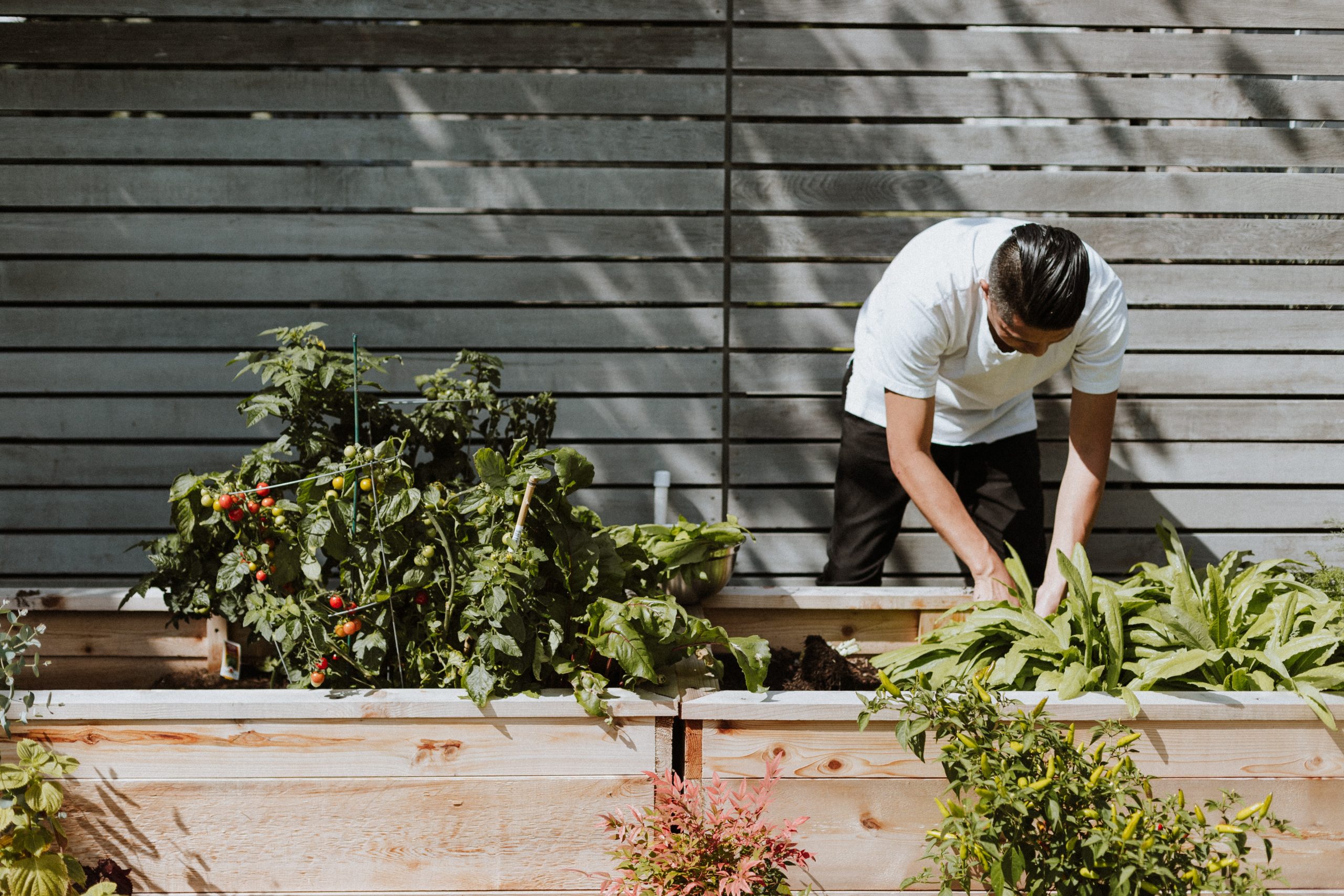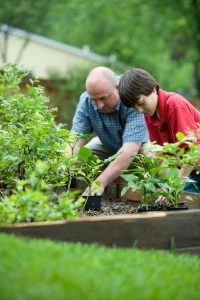Gardening Injuries
What has led to the increased interest in gardening?
Interest in gardening and farming has increased in North America, especially during the pandemic. Lots of people have taken to gardening for several different reasons. For instance, for some it is to develop a green thumb. Meanwhile for others it is to reduce their stress level during these difficult times. However, because gardening can be very physically demanding, it can lead to gardening injuries.

Most commonly affected joints in gardening injuries
- Back and Sacro-iliac (SI) joint
- Hip and Knee joints
- Wrist and hand
- Neck and shoulder
Back and SI joint injuries
Examples include discogenic pain, sciatica, sprain, strain, and mechanical low back pain.
- Sacro-iliac strains are commonly seen conditions. Prolonged bending or repetitive bending is a major trigger for back and SI pain. Pain and stiffness are usually felt at the end of the day or the next day. However, some people might feel an immediate sharp back pain while performing their gardening tasks.
- Discogenic pain can occur in any area of the spine, from the neck to the lower back. More specifically, with this type of pain, the disc protrudes and irritates the surrounding structures that may lead to pain. These structures include the nerve roots, ligaments, muscles, and fascia. Furthermore, one can present with neck pain with or without referral into the arm if it involves the neck. Similarly, there can be referral into the legs if it involves the low back. Other common symptoms of discogenic pain include stiffness and muscle spasms.
- Things can help you manage or recover from these types of injuries or pain include
- Back exercises
- proper positioning
- appropriate medication
- treatment and advice from a registered physiotherapist
- massage therapy
Hip and Knee Injuries
Commonly known terms include knee or hip sprain/strain, bursitis, and knee derangement.
- Hip and knee pain is commonly seen if a person spends prolonged periods of time squatting or kneeling during their gardening activities. Pain can start several hours after gardening or the next day. However, sudden movements can produce immediate pain and injury as well.
- Mechanical knee pain occurs when the joint is put into a constant or repetitively stressful position for a prolonged period of time. Specifically, with gardening injuries, prolonged squatting or kneeling are common triggers for pain. One presents with difficulty moving the joint or difficulty getting up after a prolonged period of rest. Furthermore, pain, stiffness, difficulty going up and down stairs, and walking are other common symptoms.
- Sprains occur when there is an injury during a task and it involves the ligaments such as ACL, MCL, LCL, PCL, and the meniscus. Specifically, one presents with sudden pain, with or without swelling, difficulty walking, limited movement and function.
- Hip and knee bursitis involves the inflammation of the bursa. The bursa is a fluid filled sac that sits between the bone and the tendon to protect the areas from constant irritation. One presents with constant pain which is worse with movement, restricted mobility and decreased function.
Elbow, Wrist and Hand injuries
Commonly injuries include Tennis elbow, Golfer’s elbow, sprains/strains, Tenosynovitis of wrist, tendonitis of wrist and fingers.
- Elbow injuries are seen with repetitive usage of garden tools. Examples include pruning, digging, and hedging.
- Wrist and hand injuries are mainly due to repetitive stress to the small joints. For instance, pulling out weeds which is time consuming, repetitive and puts a lot of stress to the joints and surrounding structures. Wrist and hand injuries are commonly triggered in people with an already existing inflammatory or a degenerative joint condition.
- Symptoms usually include pain, swelling, decreased mobility, and loss of grip strength.
Neck and shoulder injuries
Common injuries include neck sprains/strains, mechanical neck pain, Rotator cuff injury, bursitis, and tendonitis.
- Heavy lifting, pushing, and pulling can cause immediate pain and injury to shoulders and neck. Importantly, this is most commonly seen when a person tries to perform a task without knowing the capacity and the ability of the joints to handle the load.
- Tendonitis is an inflammation to the tendon that attaches to the bone. Repetitive movements, muscular imbalances or improper techniques can lead to inflammation.
- Bursitis is an inflammation of the bursa that sits in between the tendon and the bone. The function of the bursa is to reduce the friction between the two. Tight muscles and tendons or muscular imbalances, can cause irritation to the bursa causing limitation to the joint function.
Tips to reduce your risk of gardening injuries

- Lifting: Avoid lifting heavy objects in one attempt – instead, use a wheelbarrow or garden cart. Empty half a bag of soil into smaller containers and transfer. Additionally, lift with your legs and avoid bending and twisting at the same time. Also, get heavier objects closer to your body while lifting.
- Weeding: Try to always take frequent breaks and do stretches to avoid the effects of prolonged position and stress to your joints. Try to change positions such as being on all fours, kneeling with knee pads, sitting on a step stool, and using standing weeding tools to avoid injuries. If it is an option, try to use ground cover plants to avoid the effects of weeding.
- Planting: To avoid injuries to the smaller joints, try using bigger handled garden tools. Plant in a kneeling position using a kneeling pad or cushion. Try container gardening, using raised beds or flower boxes.
- Mowing the lawn: Try to use an electrical mower over a gas one. Use your abdominal muscles and shoulder muscles and avoid twisting your back while pulling the cord of the lawn mower.
- Stretching! Talk to your physiotherapist about which stretches are most appropriate for you.
In conclusion, gardening injuries can be challenging but it’s always important to listen to your body. Being mindful of how you are feeling and keeping the following tips in mind will help prevent gardening injures. Firstly, take frequent breaks and change positions when your feel aches, fatigue, or cramps. Secondly, try to do a variety of work, rather than doing the same repetitive movements. Also, always stay hydrated and apply a sunscreen while gardening. Lastly, contact a Registered Physiotherapist to help you stay safe while working in your garden.
Call PhysioNow today to book your appointment with a Registered Physiotherapist and Massage Therapist!



Leave a Reply